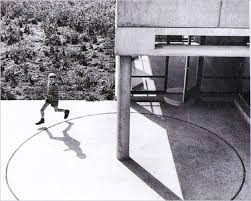This research-creation aims to explore the didactic potential of architecture in its relationship with the city through the study and design of places “in-between”. The issue of innovation in school architecture in the Canadian downtown of the 21st century is addressed in an exploration of the interfaces between school and city.
The spatiality of the in-between was studied by the architect Aldo van Eyck in the 1960s and by the theorist and teacher Bernard Tschumi since the early 1990s. Their writings and works are important references for our project. The places that connect the educational spaces and the city still constitute a grey area in current research on school architecture, which tends to focus on educational success with the aim of education, socialisation and qualification for employment rather than theorising the design of the places. We consider, however, that the experience of an architecture attentive to the quality of educational spaces and of the city can contribute to make young citizens aware of the quality of the built environment.
The design of schools and in-between places presents new challenges as functional and technical programs evolve slowly. These technical documents, which describe in qualitative and organizational terms the building projects and from which schools are designed, reproduce a model of a monofunctional building with an outdoor playground at ground level, although it has long since ceased to correspond to the land-related realities of city centres.
Paradoxically, many Canadian cities are short of elementary schools which play a key role in fostering urban development. This research/creation proposes an original mode of investigation based on the competition of ideas. In architecture, a competition of ideas does not necessarily lead to the construction of the winning project, its objective being to bring out innovative proposals and actively contribute to public debate.
In addition to being analyzed, the results of the pilot competition will be available online, in English and French, on the Canadian Competitions Catalogue site and will be the subject of a public exhibition at the UQAM Design Center. In doing so, this project also aims to contribute to the definition of research and creation in architecture and to a better understanding of the role of competitions in the renewal of the discipline and the profession. It will support the training of future researchers and future architects who will be introduced to research by working on issues that will require their contribution in the years to come.
The methodology of the project is based on a principle that we tested in a first SSHRC research-creation project that focused on social housing as a driver of transformation in Canadian and Montreal city centres : the creation component was also based on a competition involving master’s level students.
This new project aims to mobilize researchers from the disciplines of architecture, pedagogy, sociology, psychology, urban design and landscape to develop new pan-Canadian collaborations. Outside the research community, the project is expected to be of strong interest to school boards in major cities in Canada and internationally, as well as groups representing various stakeholders.
Anne Cormier, Jean-Pierre Chupin and Georges Adamczyk
research funded by the Social Science and Humanities Research Council of Canada (Insight Development Grant) 2018-2021

